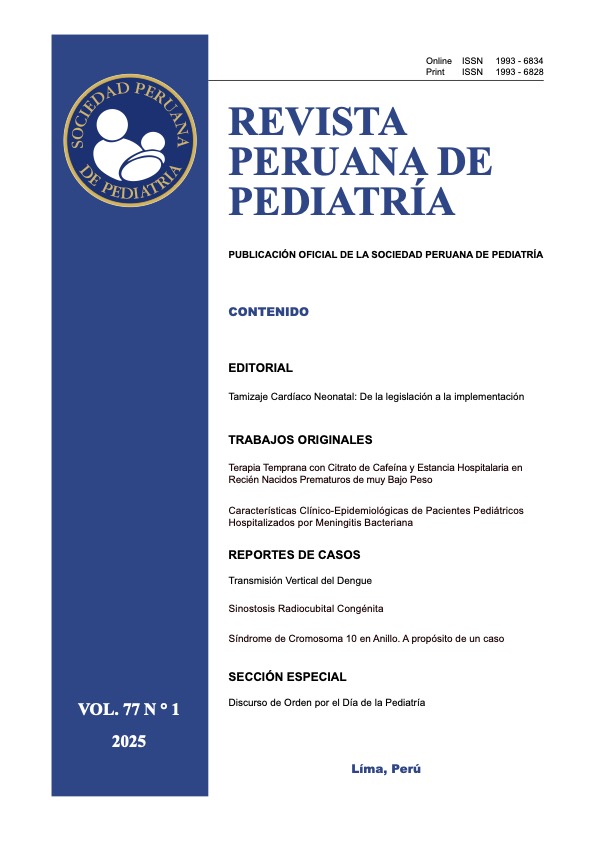CHROMOSOME 10 RING SYNDROME. ABOUT A CLINICAL CASE
DOI:
https://doi.org/10.61651/rped.2025v77n1p35-38Keywords:
Chromosomes, chromosomopathies,, hypotonia, karyotype.Abstract
Ring chromosome 10 syndrome is a rare genetic disease, with only 19 cases reported in the literature. We present the first case in Colombia, it is a 3-year-old girl with developmental delay, microcephaly, hypotonia and recurrent infections. The patient presented dysmorphic features such as micrognathia, hypertelorism and clinodactyly, accompanied by hypogammaglobulinemia and hydroureteronephrosis. A genetic study revealed a ring chromosome 10 with loss of distal segments, confirmed by 46XX,r(10) (p15q26) karyotype. The diagnosis of this chromosomal alteration is complex and requires advanced cytogenetic studies such as array-CHG for confirmation. The importance of hypotonia and the psychological disorders associated with this condition is highlighted. This case highlights the importance of a thorough clinical evaluation for the early identification and management of ring chromosome 10 syndrome, which could improve the patient’s quality of life and better guide future medical interventions.
Downloads
Downloads
Published
How to Cite
Issue
Section
Categories
License
Copyright (c) 2025 Jorge Andres Hernández Navas, Juan Therán Leon, Valentina Ochoa Castellanos, Angie Prada Rodríguez, Miguel García Brilla, Faber Díaz Garcés, Danuil Lobo Quintero

This work is licensed under a Creative Commons Attribution 4.0 International License.
Authors will retain the copyright and grant the right to publish their work in the journal while allowing third parties to share it under the Creative Commons Attribution license.
Articles are published under a Creative Commons license that allows sharing and adaptation with appropriate credit. CC BY 4.0 license. Available in English at https://creativecommons.org/licenses/by/4.0/
Authors may use other information disclosure formats as long as the initial publication in the journal is cited. The dissemination of the work through the Internet is recommended to increase citations and promote academic exchanges.
The published content does not necessarily reflect the specific point of view of the journal, and the authors assume full responsibility for the content of their article.




